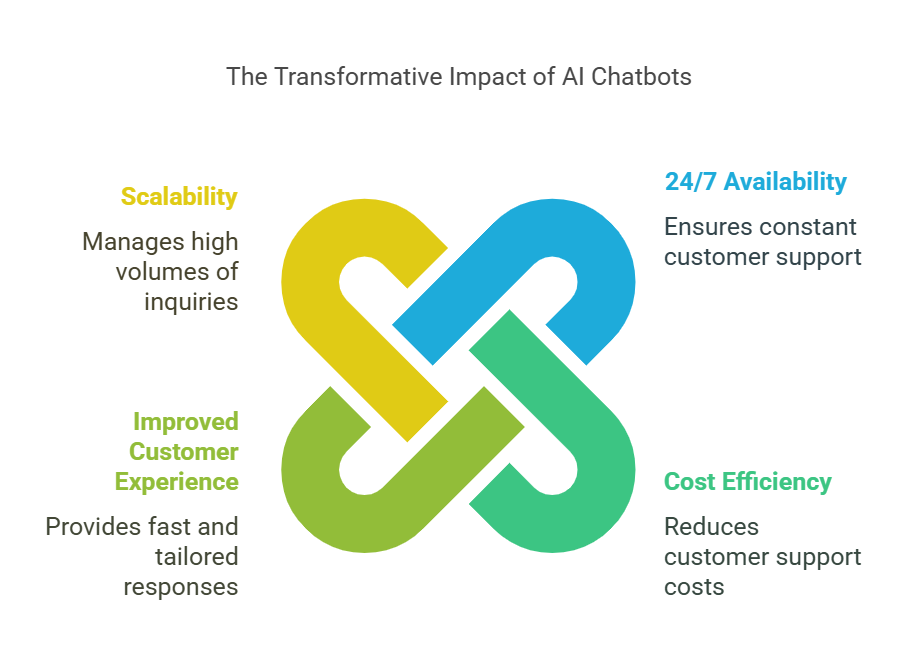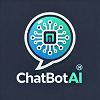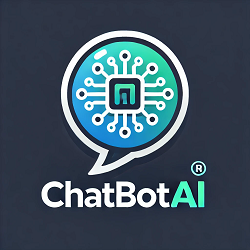By Dr. Dwi Suryanto
I. Introduction
Imagine a world where you can receive instant, accurate answers to your questions 24/7. Whether you’re shopping online, scheduling a doctor’s appointment, or studying for an exam, online chat with AI is making it possible.
AI-powered chat systems have transformed traditional online communication into something faster, smarter, and more personalized. These tools are no longer just nice-to-haves; they’ve become essential for businesses looking to enhance customer experiences, cut costs, and stay competitive in a fast-paced digital world.
In this guide, we’ll break down how online chat with AI works, explore its real-world benefits, and take a peek at what the future holds for this game-changing technology.
II. How AI-Powered Chat Works
At the core of AI chat lies cutting-edge technology that enables systems to understand and respond to human conversations. Here’s how it works:
1. Machine Learning (ML):
Machine Learning allows AI chatbots to learn from user interactions and improve their responses over time. The more they interact, the smarter they get. For instance, if users frequently ask similar questions, the chatbot can adapt by providing faster and more precise answers.
2. Natural Language Processing (NLP):
NLP is the technology that helps chatbots understand the nuances of human language—whether it’s slang, idioms, or context. This makes conversations feel natural and intuitive, as the chatbot can interpret user intent and respond accordingly.
3. Contextual Understanding:
Modern AI chatbots are capable of remembering past interactions, allowing them to provide context-aware responses. For example, if you asked a chatbot about “delivery options” in one query, it could reference that information in a follow-up conversation about “return policies.”
Real-World Examples:
- ChatGPT: A conversational AI model designed for human-like interactions.
- Customer Support Bots: AI systems used by companies like Amazon to provide quick resolutions to customer inquiries.
By combining these technologies, AI-powered chat systems deliver seamless, human-like interactions.
III. Benefits of Online Chat with AI
The rise of online chat with AI isn’t just a technological advancement—it’s a practical solution that offers measurable benefits for businesses and users alike.
1. 24/7 Availability:
Unlike human agents, AI-powered chat never takes a break. This ensures that customers can get support or information at any time, no matter where they are in the world.
2. Cost Efficiency:
Hiring, training, and maintaining a customer support team can be expensive. AI chatbots automate repetitive tasks, reducing the need for large teams and cutting operational costs significantly.
3. Scalability:
Whether you’re handling 10 queries or 10,000, AI chat systems can scale effortlessly, ensuring consistent service quality regardless of volume.
4. Personalization:
AI chat systems analyze user data to provide tailored responses and recommendations. For instance, an AI chatbot on an e-commerce site can suggest products based on a user’s browsing history.
5. Consistency:
Human agents can vary in their responses, but AI chatbots deliver uniform answers, ensuring a reliable and professional user experience every time.

Online chat with AI is not just a tool for convenience; it’s transforming industries across the globe. Here’s how different sectors are leveraging its power:
1. E-commerce:
AI chatbots guide shoppers through their journey by answering product questions, assisting with checkout, and even offering personalized recommendations. For example:
- A shopper browsing a clothing site might get a prompt: “Looking for something specific? I can help you find it!”
- After purchasing, the chatbot can provide updates like: “Your order will be delivered by Tuesday.”
2. Healthcare:
Virtual assistants in healthcare are providing significant value by:
- Scheduling appointments.
- Offering symptom analyses.
- Sending reminders for medication adherence.
Patients receive timely, accurate support without needing to visit a clinic for basic inquiries.
3. Education:
AI-powered tutors are revolutionizing learning by:
- Answering student questions in real-time.
- Offering personalized feedback on assignments.
- Recommending study resources based on individual progress.
Students now have 24/7 access to educational support, making learning more accessible than ever.
4. Entertainment:
Interactive AI chat systems are enhancing entertainment experiences by:
- Recommending personalized content (movies, music, or shows).
- Acting as virtual companions in games, engaging players with meaningful dialogue and challenges.
5. Finance:
Banks and financial institutions are using AI chat to simplify processes such as:
- Balance inquiries.
- Fund transfers.
- Answering questions about financial products, like loans or credit cards.
These interactions reduce wait times and improve customer satisfaction.
6. Travel and Hospitality:
AI chatbots assist travelers by:
- Booking flights or accommodations.
- Providing travel updates or itinerary suggestions.
- Answering questions about local attractions, restaurants, and activities.
The result? A smoother and more enjoyable travel experience for users.
V. Challenges in Online Chat with AI
While the potential of online chat with AI is immense, it’s not without its hurdles. Addressing these challenges is key to maximizing its impact:
1. Understanding Complex Queries:
AI chatbots sometimes struggle with ambiguous language or nuanced topics. For example, sarcasm, regional slang, or idioms can confuse the system. Continuous training and advancements in AI are critical to bridging this gap.
2. Privacy Concerns:
AI systems handle vast amounts of sensitive user data, from personal details to financial information. Ensuring compliance with data protection laws (e.g., GDPR) and employing robust encryption protocols are essential.
3. Dependency on High-Quality Data:
The performance of AI chatbots heavily relies on the quality of the data they’re trained on. Biases or outdated information in the training datasets can lead to inaccurate or inappropriate responses.
4. Lack of Emotional Intelligence:
While AI is improving, it still can’t fully replicate human empathy. This limitation makes it less effective in emotionally charged or highly sensitive situations, such as mental health counseling.
5. Integration Challenges:
For businesses, integrating AI chat systems with existing tools like CRMs or inventory management software can be complex and time-intensive.
Despite these challenges, continuous innovations in AI are making these systems more robust, secure, and human-like.
VI. The Future of Online Chat with AI
The possibilities for online chat with AI are expanding rapidly. Here’s what the future holds:
1. Multimodal Capabilities:
Future chatbots will combine text, voice, images, and even video in one seamless conversation. For example, a travel chatbot might show flight options while explaining them verbally.
2. Generative AI Advances:
With models like ChatGPT, chatbots will become more conversational, producing responses that feel even more human-like and dynamic.
3. Emotional Intelligence:
AI will soon be able to detect and respond to emotions through sentiment analysis, enabling more empathetic and context-aware interactions.
4. Integration with the Metaverse:
In virtual environments, AI chat will act as guides or companions, helping users navigate digital spaces, make purchases, or interact with other virtual elements.
5. Broader Industry Adoption:
As technology becomes more accessible, small and medium-sized businesses will adopt AI chat systems, leveling the playing field and enhancing customer experiences across all sectors.
If you’re considering adopting online chat with AI for your business, here are actionable steps to ensure a smooth and effective implementation:
1. Define Your Objectives
Clearly identify what you want to achieve with AI chat. Are you looking to improve customer support? Automate repetitive tasks? Boost sales? Defining these goals will help guide your strategy and ensure success.
2. Choose the Right Platform
Select an AI chatbot platform that aligns with your business needs. Consider factors like scalability, ease of integration with existing systems (e.g., CRM or e-commerce platforms), and customization options.
3. Start Small and Scale Gradually
Begin with a pilot project. For instance, deploy the chatbot to handle simple FAQs or assist a specific department. Once you’ve refined its performance, expand its scope across the organization.
4. Focus on Data Privacy and Compliance
Ensure your chatbot complies with data protection regulations such as GDPR. Use encryption and secure servers to safeguard sensitive customer information, and be transparent with users about how their data is used.
5. Combine AI with Human Support
While AI chat can handle many tasks, there will always be situations requiring human expertise. Establish a system for seamlessly escalating complex queries from the chatbot to human agents.
6. Monitor Performance and Gather Feedback
Regularly review chatbot performance using analytics and customer feedback. Track metrics such as response accuracy, resolution times, and customer satisfaction to identify areas for improvement.
VIII. Conclusion
Online chat with AI has redefined the way businesses and individuals communicate. Its ability to deliver instant, personalized, and scalable solutions makes it a game-changing technology across industries. From improving customer service to automating repetitive tasks, AI chat systems provide measurable benefits that drive efficiency and satisfaction.
While challenges like privacy concerns and emotional intelligence still exist, ongoing advancements in AI are bridging these gaps, making chatbots smarter, more secure, and more human-like with every iteration.
As businesses continue to adopt and refine AI chat systems, the future of communication is set to become even more dynamic and intuitive. Whether you’re running a small business or managing a global enterprise, online chat with AI offers the tools you need to stay competitive and connected in the digital age.
Ready to Take the Leap?
If you’re curious about how online chat with AI can transform your operations, now is the perfect time to explore its potential. Start small, focus on your goals, and watch as this transformative technology revolutionizes your communication strategies.
About the Author: Dwi Suryanto
Dwi Suryanto, Ph.D., is a leadership and management expert, as well as a self-taught programmer. With certifications in Generative AI, LLM Apps, and AI Agents, Dwi combines his leadership expertise with cutting-edge AI technology. He also holds certifications in ChatGPT, AI for Business, and Python Programming. Through his unique blend of skills, Dwi empowers businesses and individuals to thrive in the era of digital innovation.

